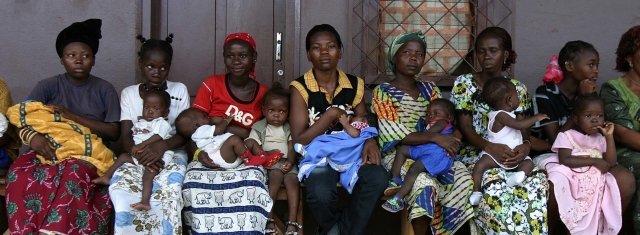Politics
SECRET VACCINATION PROGRAM CAUSES INFERTILITY
Tetanus campaign may be experiment.

Women line up for vaccinations (Source: Caf_babies CC 2.0)
USPA NEWS -
Kenyan women of childbearing age are being told by Catholic Bishops of Kenya to avoid a tetanus vaccination campaign because, "We are convinced that it is a masked program of population control". The vaccines contain a substance that causes infertility and miscarriages.
On November 7th, 2014 the Fides News Agency contained a pronouncement from the Bishops of Kenya, which confirmed that tetanus vaccines being administered to women between the ages of 14-49 years of age, surreptitiously contain a substance called Beta-HCG hormone (HCG). The HCG is necessary to sustain pregnancy; however, when it´s combined with the tetanus vaccine, it actually prevents pregnancy. The combination of the tetanus vaccine and HCG causes the body to think that the HCG is a foreign body, so attacks the HCG, thereby not allowing the conditions necessary to support pregnancy.
The use of HCG in tetanus vaccinations is not new. During the early 1990´s, the same secret methodology to vaccinate women using the tetanus vaccine was being overseen by the World Health Organization (WHO) in Mexico, Nicaragua, and the Philippines. The mysterious vaccination protocols in the Kenya campaign are the same as those used in the Mexico, Nicaragua, and Philippines vaccination programs. In both instances, the protocols are what prompted suspicions:
1) Only women of childbearing age were vaccinated, even though men and children get tetanus also.
2) The vaccinations required multiple injections, in spite of a single tetanus vaccinations being good for 10 years.
3) HCG was found in all samples of the tetanus vaccines
4) WHO has been actively involved with infertility vaccine programs since 1972.
2) The vaccinations required multiple injections, in spite of a single tetanus vaccinations being good for 10 years.
3) HCG was found in all samples of the tetanus vaccines
4) WHO has been actively involved with infertility vaccine programs since 1972.
In a PubMed posting on April 25, 1993 an abstract synopsis revealed that a vaccine for birth control was on its way to be used for family planning. It mentioned the most advanced vaccine developed used a combination of HCG and tetanus toxoid. The document goes on to state that an “important milestone“ had been reached--the vaccine had actually been used in women leading an active sexual life.
Interestingly, in a report authored by J.A. Miller on June 1995, for Human Life International, the Philippine vaccination campaign was exposed in 1993; and a bombshell revelation also revealed that none of the 3 different brands of vaccines being tested had approval of the Philippine Bureau of Food and Drugs, as mandated by law. Once The Secretary of Health was confronted with that information, still no testing was required due to the vaccines being certified by WHO, therefore, the "vaccines come from reputable manufacturers."
Another twist to this story is the pronouncement by Snopes.com, the internet urban legends and rumor debunker, that the vaccination campaign in Kenya is not a contraceptive vaccine test program. According to Snopes.com:
Finally, the claim of heretofore unavailable sterility vaccines being secretly administered to Kenyan women relies solely on the assertions made by Kenyan doctors and bishops who oppose the vaccine program. No independent tests have confirmed the doses in question were contaminated in the manner the groups suggest, and no corresponding fertility disruptions in Kenya have emerged to corroborate the claims of surreptitious mass sterilizations. (last updated 10, November 2014)
Finally, the claim of heretofore unavailable sterility vaccines being secretly administered to Kenyan women relies solely on the assertions made by Kenyan doctors and bishops who oppose the vaccine program. No independent tests have confirmed the doses in question were contaminated in the manner the groups suggest, and no corresponding fertility disruptions in Kenya have emerged to corroborate the claims of surreptitious mass sterilizations. (last updated 10, November 2014)
In fact, reputable testing labs, and numerous medical research organizations, have published articles specifically validating that HCG in tetanus toxoid is being developed and has been tested on humans. As for mass fertility disruptions, the vaccination program is presently ongoing, only time and truthful reporting will determine if there is a decrease in viable pregnancies.
Liability for this article lies with the author, who also holds the copyright. Editorial content from USPA may be quoted on other websites as long as the quote comprises no more than 5% of the entire text, is marked as such and the source is named (via hyperlink).





